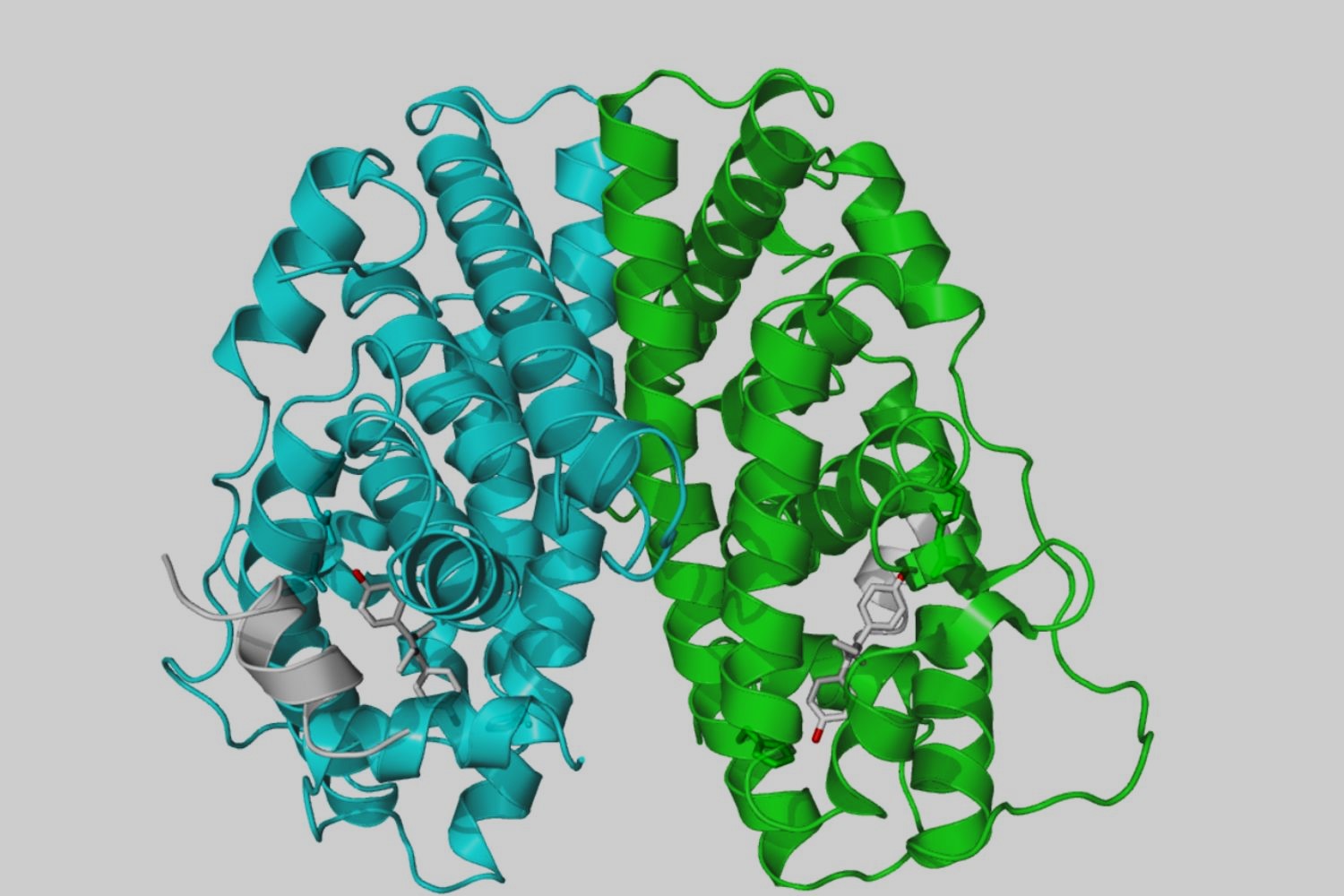
Mutations in the estradiol receptor can have significant impacts on the body. Estradiol, a form of estrogen, plays a crucial role in reproductive and overall health. When the receptor for this hormone mutates, it can lead to various health issues. These mutations might affect how the body responds to estrogen, potentially causing conditions like breast cancer, osteoporosis, or infertility. Understanding these mutations helps in developing targeted treatments and improving patient outcomes. This article will explore 25 intriguing facts about these mutations, shedding light on their effects, causes, and potential treatments. Get ready to dive into the world of genetics and hormones!
Key Takeaways:
- Estradiol is a powerful hormone that affects our bodies in many ways, from our reproductive health to our mood. Mutations in its receptors can cause serious health issues like cancer and fertility problems.
- Scientists are working hard to understand these mutations and develop treatments to help people with these health issues. By studying these mutations, they hope to create personalized treatments and improve existing ones.
What is Estradiol?
Estradiol is a form of estrogen, a hormone that plays a crucial role in the development and functioning of reproductive organs. It influences various bodily functions, including the menstrual cycle and bone health.
- Estradiol is the most potent form of estrogen in the human body.
- It is primarily produced in the ovaries but also in smaller amounts by the adrenal glands and fat tissues.
- Estradiol levels fluctuate throughout the menstrual cycle, peaking just before ovulation.
- It helps maintain the thickness of the vaginal lining and the health of the skin.
- Estradiol influences mood and cognitive functions, often linked to feelings of well-being.
What are Estradiol Receptors?
Estradiol receptors are proteins found inside cells that bind to estradiol, allowing it to exert its effects. These receptors are crucial for the hormone's action in various tissues.
- There are two main types of estradiol receptors: ER-alpha and ER-beta.
- ER-alpha is predominantly found in the uterus, liver, and breast tissues.
- ER-beta is more common in the ovaries, prostate, and brain.
- These receptors can be located in the cell nucleus or on the cell membrane.
- When estradiol binds to its receptor, it can activate or repress the expression of specific genes.
How Do Mutations in Estradiol Receptors Occur?
Mutations in estradiol receptors can happen due to various factors, including genetic changes, environmental influences, and lifestyle choices. These mutations can significantly impact how the body responds to estradiol.
- Genetic mutations can be inherited or occur spontaneously.
- Environmental factors like exposure to endocrine-disrupting chemicals can lead to receptor mutations.
- Lifestyle factors such as smoking and poor diet can increase the risk of mutations.
- Mutations can alter the receptor's shape, affecting its ability to bind to estradiol.
- Some mutations can make the receptor more sensitive or less responsive to estradiol.
Effects of Mutations in Estradiol Receptors
Mutations in estradiol receptors can have wide-ranging effects on health, influencing everything from reproductive health to cancer risk.
- Mutations can lead to conditions like estrogen insensitivity syndrome, where the body cannot respond to estrogen.
- They can increase the risk of developing hormone-dependent cancers, such as breast and ovarian cancer.
- Mutations may contribute to osteoporosis by affecting bone density regulation.
- They can impact fertility by disrupting the menstrual cycle and ovulation.
- Mutations in estradiol receptors can also affect mood and cognitive functions, potentially leading to mental health issues.
Research and Treatment
Understanding mutations in estradiol receptors is crucial for developing targeted treatments for related health issues. Ongoing research aims to uncover new therapies and improve existing ones.
- Researchers are studying how specific mutations affect receptor function and disease progression.
- Targeted therapies, such as selective estrogen receptor modulators (SERMs), are being developed to treat conditions caused by receptor mutations.
- Genetic testing can help identify mutations in estradiol receptors, allowing for personalized treatment plans.
- Lifestyle changes, such as a healthy diet and avoiding endocrine disruptors, can help manage the effects of receptor mutations.
- Ongoing clinical trials are exploring new drugs and treatment strategies to address the impact of estradiol receptor mutations.
Final Thoughts on Estradiol Receptor Mutations
Mutations in the estradiol receptor can have significant impacts on health. These changes can influence hormone regulation, potentially leading to conditions like breast cancer or osteoporosis. Understanding these mutations helps in developing targeted treatments and improving patient outcomes.
Research continues to uncover new insights into how these mutations function and their broader implications. Staying informed about these developments is crucial for both medical professionals and patients.
By recognizing the importance of estradiol receptor mutations, we can better appreciate the complexity of hormonal interactions in the body. This knowledge not only advances medical science but also empowers individuals to make informed health decisions.
Keep an eye on emerging studies and advancements in this field, as they hold the key to future breakthroughs in hormonal health and disease prevention.
Frequently Asked Questions
Was this page helpful?
Our commitment to delivering trustworthy and engaging content is at the heart of what we do. Each fact on our site is contributed by real users like you, bringing a wealth of diverse insights and information. To ensure the highest standards of accuracy and reliability, our dedicated editors meticulously review each submission. This process guarantees that the facts we share are not only fascinating but also credible. Trust in our commitment to quality and authenticity as you explore and learn with us.
